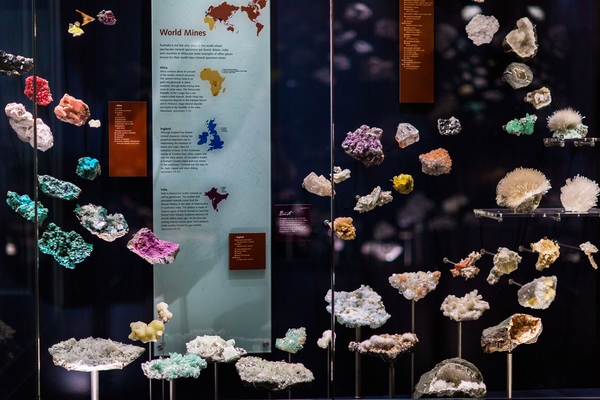Recovering a 'lost collection' - the Saemann minerals
Carefully preserved but largely unidentified, it’s taken some detective work and single-minded dedication by Museum volunteer John Rankin to piece together the mineralogical maze that is the Louis Saemann collection.
In 1860 the NSW Legislative Assembly voted £200 to be spent by the Trustees of the Australian Museum for the purchase of ores and minerals. Trustee and famed ‘Father of Australian Geology’, the Rev. W. B Clarke wasted no time in sourcing a catalogue and placing an order for minerals with well-known dealer Monsieur Louis Saemann of Paris.

© Australian Museum
When the specimens arrived in July 1861, Curator Simon Rood Pittard was virtually on his deathbed and it was left to recently appointed Assistant Curator Gerard Krefft to unpack the glittering prize.
Flat out with building up the museum and its zoological collections, Krefft finally managed to publish his Catalogue of the Minerals and Rocks in the Collection of the Australian Museum in 1873. Crucially he retained and recorded Saemann’s numbers, species and locality.
And it’s just as well he did because by 1892, following several renumberings and cataloguing errors, almost all connection between the specimens, their original numbers and their provenance was gone. It was up to John Rankin, long-time mineral enthusiast and Mineralogy section volunteer to unravel the mineralogical mess.
Using Krefft’s catalogue, the original Saemann catalogue (still preserved in the Museum’s Archives), his expert knowledge of mineral types and by carefully cross-checking 400 specimens and identifying Saemann’s unique labelling style, John has brought this collection back to life. He has successfully identified so far over 500 Saemann mineral specimens, still held in the Australian Museum collection.
John has restored the integrity of a unique collection and through his inspired use of archival records has again demonstrated the value of preserving the Museum’s written heritage to illuminate the compelling stories embedded in its extensive artefact and specimen collections.









